Despite all the global socio-economic shifts, the digital advertising industry keeps evolving and expanding. Throughout recent years the media-buying process between advertiser and publisher has been mostly represented by programmatic advertising. This trend is unlikely to change in the near future.
According to Emarketer, programmatic digital display ad spending was projected to increase by 15.2% by the end of 2024 and reach $156.82 billion in the United States. Other estimates indicated that programmatic ads will be worth $779 billion by the year 2028.
When stepping into the world of real-time bidding, it is crucial to understand basic concepts and the general structure of the programmatic ecosystem that enables buying and selling digital ads. Let’s define supply-side and demand-side platforms so it becomes easier to understand the programmatic context.

Demand-side platform (DSP)
DSP and SSP are the most important platforms for launching the best display ad campaigns and monetizing inventory.
Demand side platform is a kind of software that helps advertisers buy the most relevant ad impressions across the web for the best possible prices. Here, advertisers can quickly find suitable inventory, purchase or bid on it and display customizable ads to the target audience — all of it within seconds in real-time. DSPs also make it possible to post different ad formats.
Ad exchanges, ad networks, SSPs... DSP in digital marketing connects to these ad space-gathering platforms, so there is always plenty of digital ad stock to choose from. DSP companies offer a technology that provides advertisers access to all these inventory sources using a single interface and allows them to buy ad space of their choice.
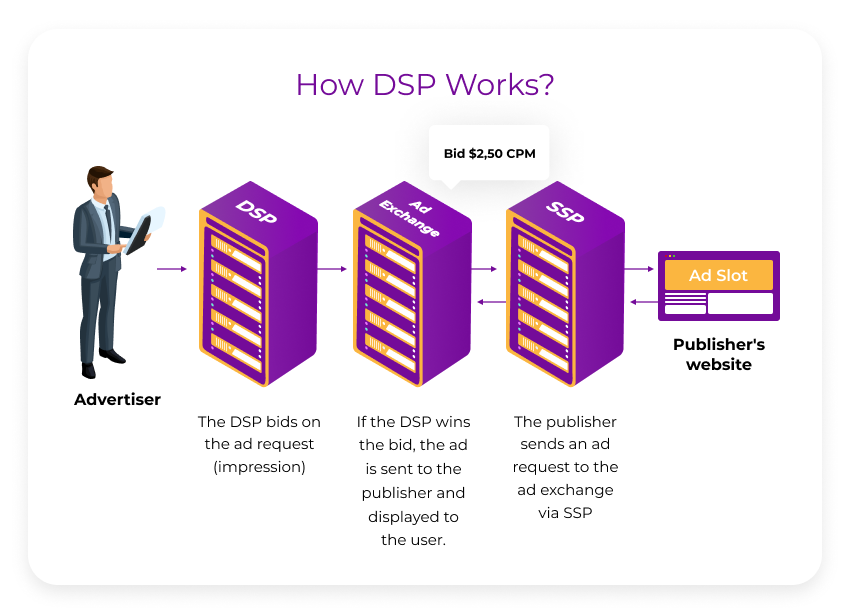
The stock will be categorized by the most important features. For example, with SmartyAds DSP advertising can focus on formats and choose among banners, rich media, native ad formats, etc. At the same time, there are also platforms that are focused on some specific industry niches or premium/remnant inventory, so one can opt for these segments if their business goals demand such a strategy.
Let’s briefly review the main feature of a classic DSP so you know what functionalities it encompasses:
- Advanced targeting: precise targeting settings based on different criteria such as demographics, behavior, interest, context, to maximize the ad relevance and boost engagement.
- Real-time bidding: can buy ad placements in milliseconds without human intervention while optimizing budget and maximizing reach.
- Diversity of ad formats: supports display, video, native, shoppable, mobile, CTV, in-app, and rich media ads to enable creativity and experiment.
- Creative builder: not every DSP has this fascinating feature, but SmartyAds surely does. It enables advertisers to create engaging creatives within minutes.
- AI-optimization: if a DSP has machine learning, it can improve bidding strategies, optimize ad spend, and enhance campaign performance automatically.
- Frequency capping: limits the number of times a user sees your creatives during a specific period (you can establish the frequency to showcase your advertisement while preventing fatigue and nuisance).
- Budget control: provides detailed insights on spendings and impressions received for the full transparency and campaign control.
- Fraud prevention: with assistance of AI, this functionality can block suspicious activity and traffic to nurture a safe and secure environment.
- Reporting & analytics: detailed real-time insights that will allow you to effectively track and optimize your campaigns.
Demand-side platforms can be sometimes mistaken for other tools like data management platforms, ad networks, and others, nevertheless, these have different features, and perform different functions. To help you avoid such confusion, let us briefly review these differences.
DSP vs DMP
The main distinction is their purpose. DSP is a tool utilized to buy ad space programmatically from different publishers across various platforms. DMPs are data management platforms, so their main purpose is to help advertisers collect and analyze data from various sources and use it for building an ad strategy. For this, DMP is integrated with DSP.
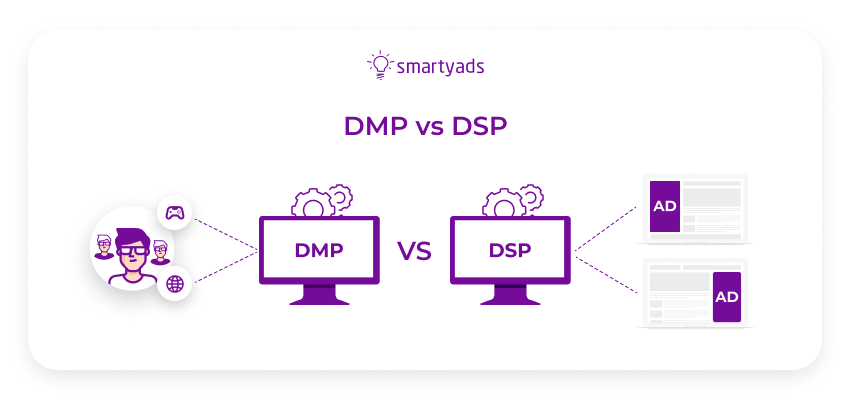
DSP vs ad network
Here both platforms stand for an important part of the programmatic buying process, but each one is for a different one. DSP is a software that is used by advertisers to buy ad space, while multiple ad networks and ad exchanges are the places where DSP, SSP, and other platforms connect. In particular, ad networks can buy, sort, and classify impressions, then sell them in a bulk to advertisers interested in reaching a relevant audience segment.
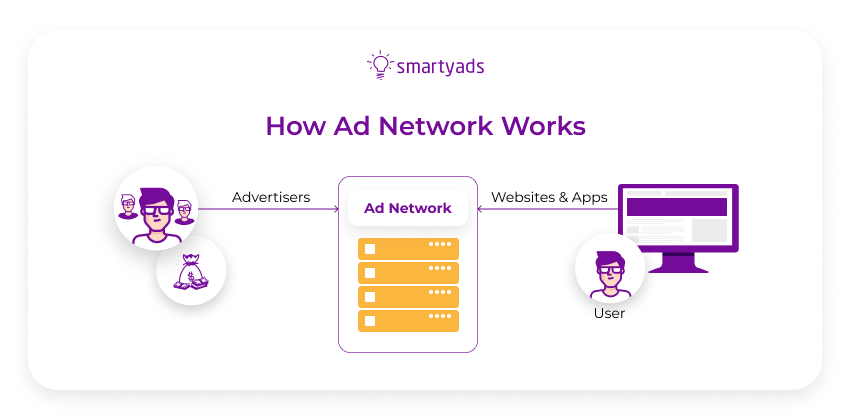
DSP vs ad exchange?
To make it easier to explain, ad exchanges are open marketplaces where publishers sell inventory, and media buyers bid on advertising impressions directly. Thus, advertisers and publishers can trade on the ad exchange without middlemen and thus, excessive commissions. DSPs, meanwhile, offer access to multiple ad exchanges and ad networks.

What is a supply-side platform (SSP)?
Supply-side platform or SSP in digital marketing is software created for publishers to manage and sell their digital inventory via real-time bidding or other deals. SSPs have convenient interfaces to help publishers optimize their placements, future advertising space, and format, as well as price per impression.
SSP advertising provides access to multiple ad networks, exchanges, and demand-side platforms. They automatically match the publisher’s inventory with relevant ads from interested advertisers. Such an automated way of inventory filling often helps to effectively monetize website traffic and optimize the yields of publishers.
Here are the core features of an SSP:
- Header bidding integration: this technology allows multiple demand sources aka advertisers to bid on publishers’ inventory simultaneously while boosting CPM.
- Inventory management: with this feature publishers can be sure that available space is allocated efficiently, and filled with high-quality ads to maximize performance and revenue.
- Price floor optimization: makes it possible for publishers to set desired minimum bid prices to make sure they receive fair revenue for their placements.
- Private marketplace & direct deals: allows publishers to sell their premium space and close deals with advertisers for higher CPMs.
- Integration with DSP and ad exchange: seamlessly connects to multiple demand sources to stay on top of the curve and increase revenue.
- Yield optimization: with the assistance of machine learning can optimize fill rates to ensure maximum campaign effectiveness.
- Support of diverse placements: allows diverse advertising formats from mobile to rich media and CTV ads.
- Ad quality control: enables fraud detection as well as verifying ads to refuse low-quality ads.
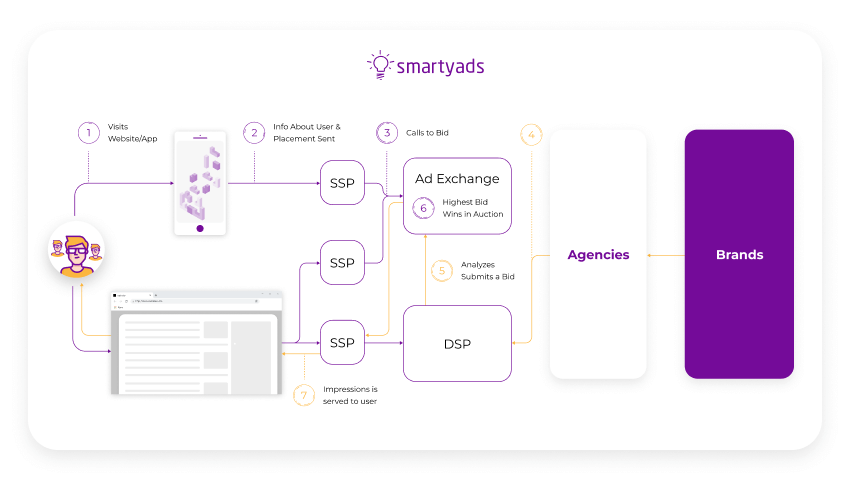
There is one more crucial detail for contrasting the supply side vs demand side platform. SSPs usually accept publishers whose inventory meets specific requirements established by each tool individually. For example, some SSPs focus on inventory from narrow niches or premium inventory exclusively.
If your ad stock satisfies all the requirements you can easily sell ads on your website or app with SSP and get revenue from programmatic media trading. We also recommend monitoring and analyzing your traffic in terms of demographics and audiences. This data is very valuable for launching advertising campaigns and can be shared with advertisers so that targeting could be more precise.
SSP vs DSP: the difference in their work and specifics of DSP
To better understand the difference between demand side platform vs supply side platform, let's take a closer look at how it all works. A typical DSP should look like an interface where advertisers can build a campaign and set up all the desired parameters regarding the placements and targeting options.
Once the data about audiences is configured in the settings of the data management platform, the advertiser can target people of particular ages, incomes, or gender.
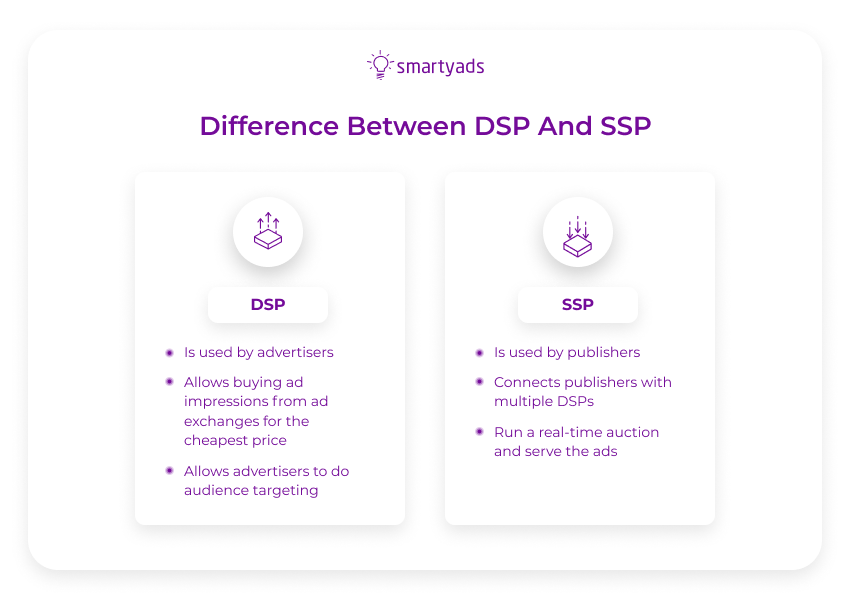
The DSP distributes ads according to the selected criteria. To enable this distribution, DSPs analyze all the available ad stock and then bid on the most relevant. If it wins the real-time bidding auction the advertisement is getting sent to the SSP. Subsequently, the advertisement of the highest bidder is displayed on the publisher's ad space.
DSP or SSP: the mechanism behind SSPs
DSP vs SSP advertising: what are the differences in their work? Well, we’ve just revised the anatomy of DSPs and the definition of supply-side platform, let us now study the basic mechanism behind SSPs and their principles of work.
On the supply end, publishers register at SSPs (including mobile SSP platforms) and configure selling campaigns for their inventory. They set up the parameters of their inventory as well as information about their potential buyers. Then SSPs can automatically send requests to the DSPs and offer placements in real-time bidding auctions in order to find suitable bids. SSPs can also feature direct and private marketplace deals (also available on SmartyAds SSP).
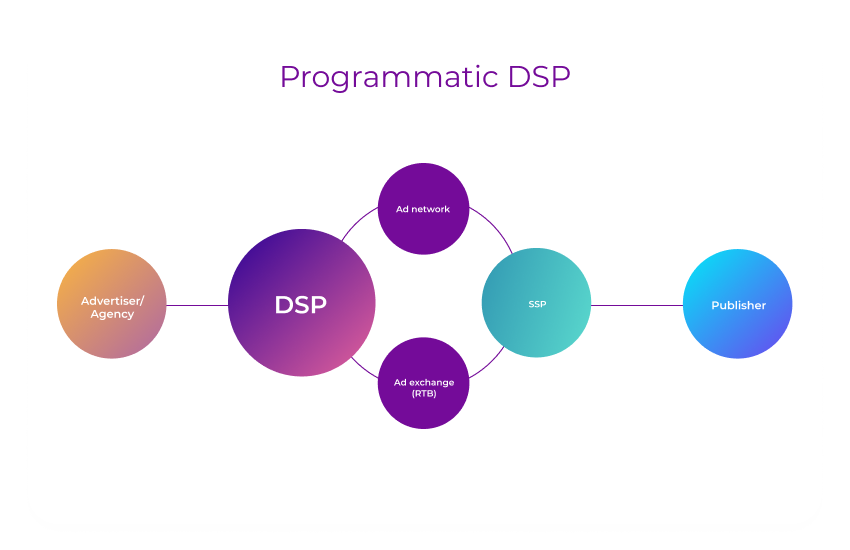
DSP vs SSP: comparative table
Now that we know both the definitions and the principles of the work of SSP and DSP, we can contrast the two and see the main distinctions. Here is a comparative table to make the contrast between DSP and SSP examples more visual:
| The platform | Demand-side platform DSP | Supply-side platform SSP |
| Main purpose | to help advertisers find and purchase relevant ad placements | to allow publishers to sell and manage their inventory |
| Role within the programmatic ecosystem | “demand” or buy side | “supply” or sell side |
| Function | connects advertisers with multiple SSPs, ad exchanges, and networks, allows advertisers to buy impressions with a specific target audience and display customizable digital ads with specific parameters | automatically offers inventory to multiple platforms such as DSP, ad agency, ad exchange, and online marketplace sells it for the best price, helps to optimize website monetization strategy, and increase revenue |
| Example | SmartyAds DSP | SmartyAds SSP |
How do DSPs and SSPs work together?
They work like a perfectly balanced mechanism in the digital advertising ecosystem — while SSPs lift publishers by maximizing their revenue, DSPs keep advertisers steady by ensuring their ads land in front of the right audience.
This seamless interaction ensures advertisers reach relevant audiences while publishers maximize their ad revenue. Advanced features we described above further enhance the efficiency and effectiveness of this ecosystem, making programmatic advertising more profitable for all parties involved.
How do advertisers benefit from a demand-side platform? They can:
- place ads at a low cost;
- automate the ad space negotiation process;
- access a wide pool of publishers;
- set up precise targeting;
- refine their campaigns with detailed analytics.
How do publishers benefit from a supply-side platform? They can:
- automatically sell ad space;
- easily connect to a net of DSPs and ad exchanges;
- increase their revenue with real-time bidding;
- block low-quality ads;
- set the price floor.
The takeaway
One can say that DSP and SSP are opposite sides of the programmatic media-buying spectrum. The difference is specifically notable if you contrast their main functions.
SSP empowers publishers to monetize their traffic and get the best price for it through real-time bidding or other auction competitions. Real-time bidding streamlines processes and saves lots of publishers’ time as it finds relevant advertisers, closes deals in milliseconds and automatically fills up all available ad space.
On the other hand, DSP is a powerful tool for advertisers to seamlessly purchase necessary inventory and manage their campaigns on the go. With the assistance of this software, advertisers can target specific audiences with precise messages at the right moment in the right context.
Launch your best-performing campaigns with SmartyAds DSP!
…or get full control over your inventory monetization on SmartyAds SSP!

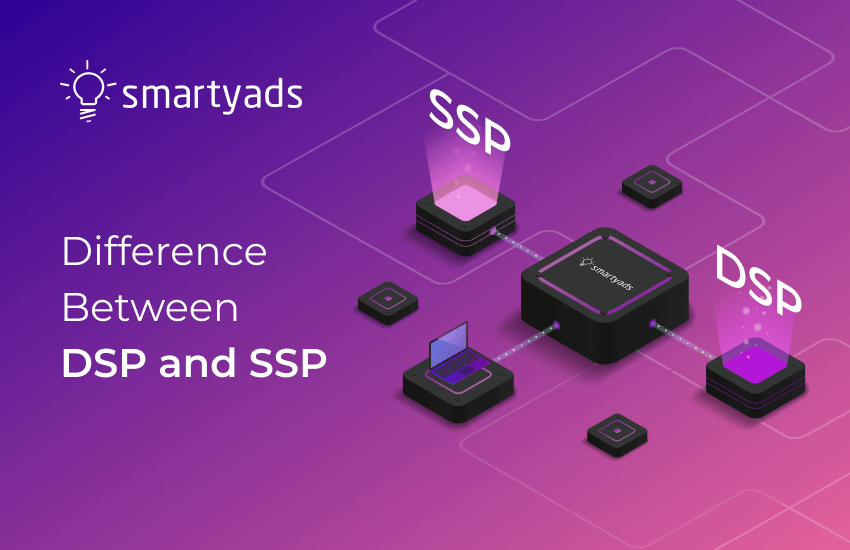
.webp)


